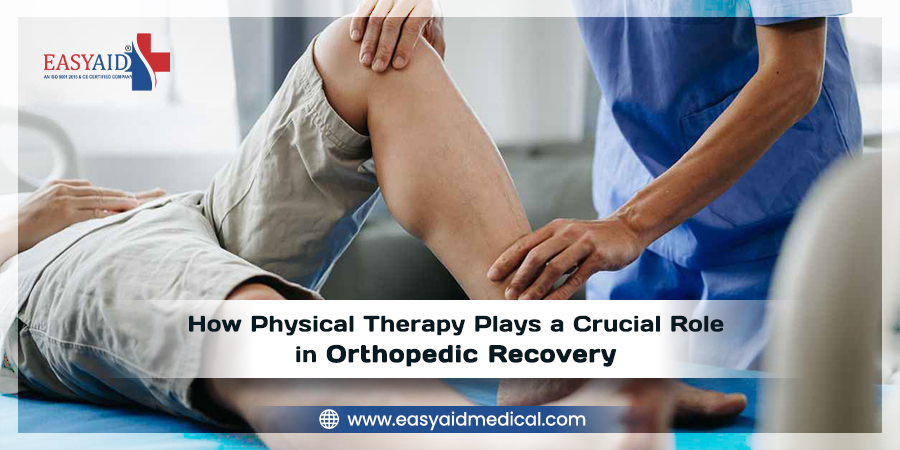Did you have an accident, fall, or otherwise injure yourself? Many injuries cause severe pain and muscle stiffness and do not tend to go away easily. Irrespective of your age bone and joint injuries tend to take more time to heal. You can also feel helpless and frustrated during such times. This is mainly due to due to dependency on others for daily chores.
What is Physical Therapy?
Physical therapy is a collection of particular exercises that help address common or serious illnesses, injuries or certain health conditions that limit a person’s ability to perform their daily activities. It helps evaluate and understand the range of motion, flexibility, strength, and balance of a person and formulate exercise regiments targeting the improvement of physical well-being and general health of individuals. This highly skilled team works toward improving, maintaining and regaining the mobility and function of an individual.
Common Conditions treated by Physical Therapy
Orthopedic physical therapy helps address a wide range of conditions, including:
- Spinal Conditions: Herniated discs, Spinal stenosis, Degenerative disc disease, Sciatica
- Injuries: Sprains, Accidents, Fractures, Sports-related.
- Post-Surgery: Joint replacements, Spinal surgery.
- Arthritis: Rheumatoid and Osteoarthritis.
- Limited mobility: Frozen shoulder, Scoliosis.
- Neurological disorders: Parkinson’s, Stroke.
- Chronic pain: Back, Neck, Shoulders.
Benefits of Orthopedic Physical Therapy
- Improved Mobility
Many patients often compromise on rehabilitation care after a surgery or an injury. However, timely regular physiotherapy by an experienced specialist is helpful for patients to regain their range of motion gradually. This may also include guidance on use of assistive devices like crutches or braces is required.
- Controlled Pain
Are you on pain medications? Regular physical therapy helps manage pain without relying only on medication. Several techniques such as massages, heat and cold therapy, and electrical nerve stimulation can reduce pain and stiffness, helping patients feel more comfortable during recovery.
- Enhanced Blood Circulation
Proper blood circulation is of utmost importance for healing, especially after a surgery or a trauma event. Guided exercise techniques used in physical therapy ensure that blood flow is optimized, speeding up the recovery process.
- Loosens Tense Muscles
It helps stretch tense body parts and also releases stiff, sore muscles. You may exercise pain-free by learning the right stretches from a physical therapist. More significantly, muscles that are relaxed are less likely to get hurt.
- Preventing the production of Scar tissue
This is a fibrous tissue that tends to form when your body repairs a damaged tissue after an infection, injury or surgery. It develops inside a joint causing trouble in movement and may also lead to immense pain and discomfort. Timely and appropriate physiotherapy sessions can help solve this problem.
- Restored Balance and Control
After major joint replacement surgeries such as hip ball or knee replacements, patients may struggle with balance and coordination. Working with experienced and renowned physiotherpaists can give amazing results. Over a period of time it can help improve your balance and minimize falls the recovery period.
How Physical Therapy Plays a Crucial Role in Orthopedic Recovery
Orthopedic recuperation is much more than what you think. It goes beyond just healing the muscular functions, it also focusses on restoring a person’s capacity to live an independent and fulfilling life.
- Prevents Complications Post-Surgery
A major benefit of regular physical therapy is the reduction of post-surgical complications, such as blood clots or muscle atrophy. Physiotherapists assist patients maintain some level of activity, reducing the risk of complications that may delay the recovery.
- Gradual Return to Normalcy
Physical therapy is a very slow process. And it needs complete support from the patient as well with a regular commitment to exercise. From walking a few steps, to getting your grip back to moving an arm, each therapy session is designed to help patients regain their functionality slowly and steadily.
- Individualized treatment plans
Physical therapists take down your complete medical history and then develop a personalized treatment plan. Your current health condition as well as your future health goals, needs, and overall progress matter a lot which making your treatment plan.
- Reduction in the Need for Surgery
Specialized physical therapy targeted at a particular region can assist reduce or eliminate the need for additional procedures in many medical instances including pain and damage. This is essential for those with musculoskeletal disorders, such as degenerative diseases or unstable joints.
Are you recovering from a physical injury? Is a loved one suffering from pain or immobility? It is advisable to consult an orthopedic doctor to explore the most appropriate options for physical therapy for your recovery. Timely involvement with the right physical therapy treatment can make a substantial difference in your journey toward complete recovery.

